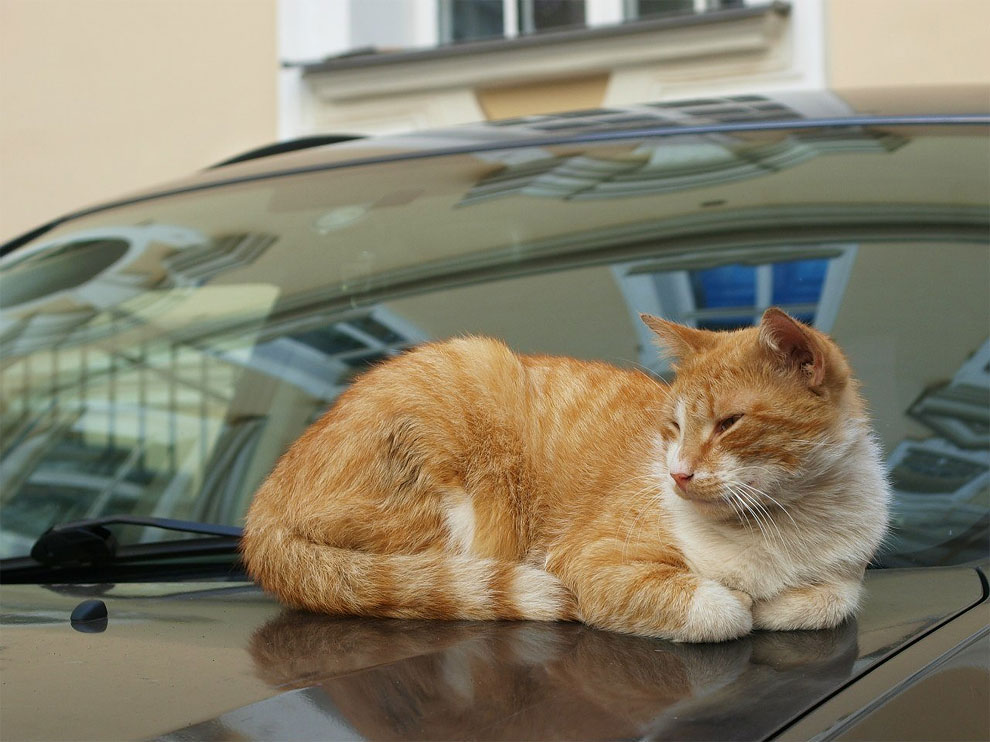No Rat Shall Pass: Cats of the Hermitage Museum
The Winter Palace in St. Petersburg, once home to Russia’s ruling Romanov dynasty, is now the centerpiece of the world-renown State Hermitage Museum; its new tenants are a population of stray cats, who control the local population of mice and rats that threatens the museum’s exhibits.
A cat named Martin lying on a car. A large and gentle creature, he is equally friendly to other cats and to the museum visitors. According to local legend, the first cat was brought to the original Winter Palace (a wooden building then known simply as the Winter House) from the Netherlands by Peter the Great himself.
In 1745, in order to deal with the growing rodent population of the Winter Palace, Empress Elizabeth of Russia issued a “Decree on sending cats to the court,” and ordered that the finest mousers from the city of Kazan to be sent to the imperial palace.
Once Empress Catherine the Great moved to the Winter Palace, the cats were also relocated there, eventually becoming somewhat of a local legend.
A cat named Golubka. A furry and tender feline, she was recently returned back to the museum by a person who previously adopted her as a pet. During the Siege of Leningrad of 1941-1944, the feline population of Hermitage was completely decimated. However, after the blockade was lifted, two trains carrying nothing but cats arrived in the city, and a new generation of mousers soon populated the museum.
Currently about 80 cats live in the museum, while the optimal feline population should number no more than 50, according to Anastasia Marinina, a Hermitage Cats movement volunteer. Any person can take in one of the Hermitage cats as a pet and obtain free admission to the Hermitage Museum as a bonus.





